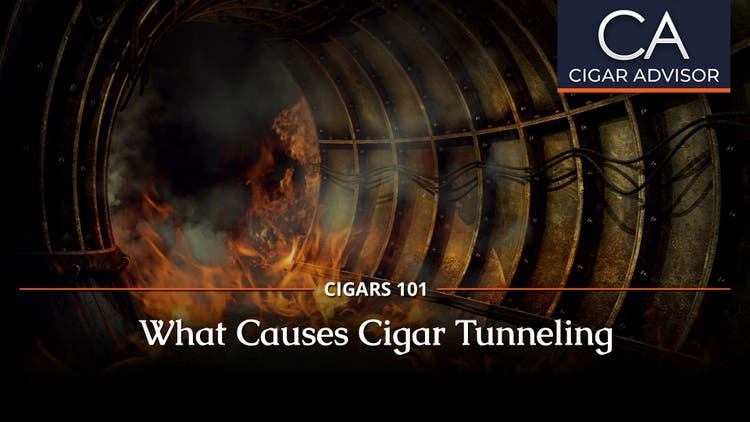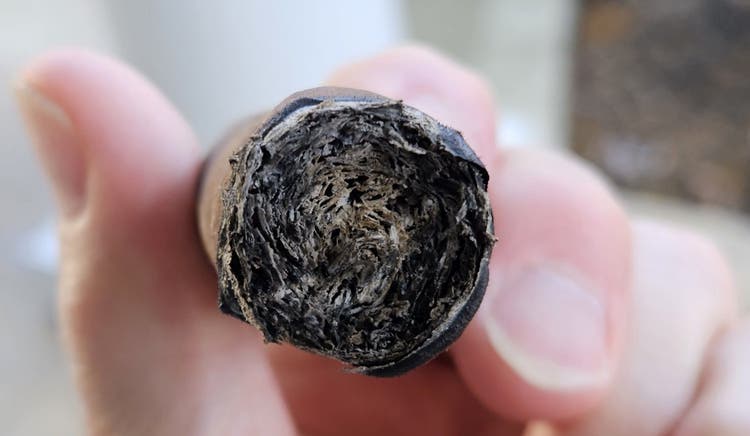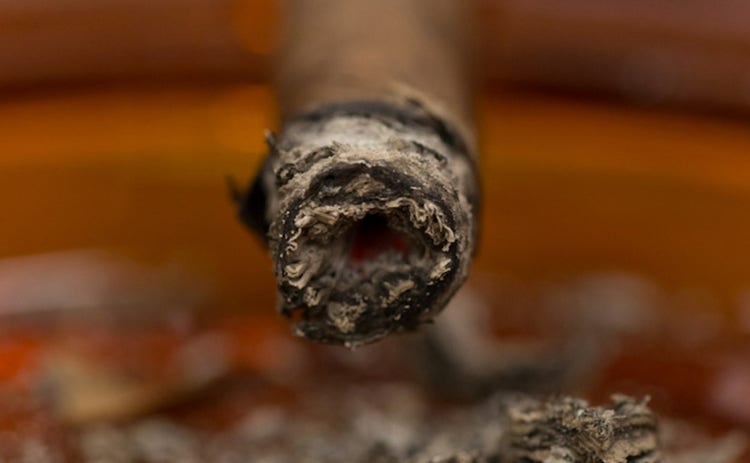
What Causes Cigar Tunneling?
The things that cause cigar tunneling are not necessarily your fault
By Gary Korb
Have you ever been a victim of cigar tunneling? This annoying phenomena is a circumstance in which a cigar’s wrapper leaf refuses to burn, causing a cave-like formation in the foot of the cigar. Tunneling can be caused by several factors. We’ll dig into those in more detail below, but it’s not necessarily your fault.
When your cigar begins to tunnel, look to the binder leaf. It may not be the cause of the problem; it’s more like the catalyst. Why? Because the binder leaf has the best burning properties. Placed between the fillers and the wrapper, it helps all of the tobaccos burn at approximately the same rate. For whatever reason, the wrapper survives unscathed while the binder and core tobaccos continue to burn away. This not only kicks the whole blend out of sync, you may also notice that your cigar doesn’t taste right.
So, now that you know what’s doing the tunneling, let’s look at what causes a cigar to tunnel in the first place.

Causes of Cigar Tunneling
Dark Maduro and Oscuro cigar wrappers are generally thicker and tend to have more oils than your typical shade grown and other “natural” wrapper leaves. They also absorb more humidity than the fillers down below. As a result, they burn at a slower rate. If the fillers also lack enough moisture, they’re going to burn even faster causing the cigar tunneling effect. Whenever you have excess moisture in a cigar, there’s always a chance that trouble may be brewing. That’s why it’s important to keep the weather in your humidor as consistent as possible.
Another cause of tunneling is when the wrapper is not neatly rolled around the bunch. This can cause a gap to form between the wrapper and binder. It may not be noticeable to the naked eye, but all the wrapper needs is a minuscule bit of gap between it and the binder to cause tunneling. Alternately, too much binder tobacco can cause the filler core to burn faster than the wrapper leaf. (Another reason to keep your cigars equally humidified as best you can.)
There is also a condition called “double bunching.” If a cigar is properly rolled, all of the leaves will fall into line when it’s lit and you should get a nice clean and even ash. It’s a rare occurrence, but here’s how double bunching can happen. During the bunching process, somehow the binder gets doubled back causing it to be too thick. As described above, because there is now more combustible tobacco in the mix, the cigar will begin to tunnel.
Speaking of the rolling process, cigars that have been rolled using the entubar method, are much less likely to tunnel than cigars rolled using the more common Booking and Accordion rolling methods. In the entubar (a.k.a. “entubado”) method, each filler leaf is rolled into itself, like a small scroll. Then, each individually scrolled leaf is placed together to form the bunch. This creates a tree ring-like visual effect at the foot. More specifically, entubar rolled cigars are packed more firmly and allow air to travel evenly between all of the leaves. In addition to a more even burn, you may also get more flavor and aroma.
Cigar tunneling can also arise from the factory using lousy tobacco. Some lower quality filler leaves will burn faster than the fillers found in better-made cigars. Odds are those leaves were not harvested, cured, or aged properly and possibly all three combined. The filler leaves found in better cigars often have a high-priming ligero or other high-priming leaf at the center. They are generally oilier and burn slower. Properly cured and aged tobaccos will burn evenly and create the desired flavor and aroma the master blender intended.
I’m constantly reminding cigar smokers about slowing down when it comes to puffing. Putting your cigar down for a minute or two is about right. The problem is, waiting too long can sometimes cause tunneling. Although it’s rare, I’ve walked away from some cigars for as long as 10 minutes and they’ve remained lit with no problems. However, if the ash on your cigar is very long it can act like insulation material for the fillers, keeping them hot, while the binder and wrapper leaves cool-off. You don’t know the cigar is tunneling until you tap-off the ash and see the little crater. So, here I go again…take your time when you smoke your cigars; you’ll enjoy them a lot more.

How to Help Prevent Cigar Tunneling
Proper cigar storage and humidity is probably the most common issue among premium cigar smokers. It’s like trying to control the weather. Not easy. However, if you can achieve a relatively consistent environment in your humidor, your cigars will burn better. When the humidity fluctuates too much, the tobaccos in each cigar may retain varying amounts of moisture and that can lead to burn issues. Although 70% humidity and 70°F are allegedly the “ideal” situation, most cigar smokers eventually find the combination that works best for them. Just keep it consistent. Rotating your cigars to different areas and levels of your humidor can also help keep things on an even keel.
Whenever you light-up, always make sure you get a good even burn across the foot before taking that first puff. Also, use a lighter that’s appropriate for the cigar’s ring gauge. In other words, try not to use a quad flame lighter for a Corona or a Lancero.
Start by carefully searing the outer edges; this helps bond the wrapper and binder. If you start in the center and spin your lighter, that move can also lead to cigar tunneling. Uneven burns on better made cigars will often eventually correct themselves. Nevertheless, if you really want to light your cigar like a pro, watch Nick Perdomo’s Cigar Advisor video on how to smoke a cigar. That’s really all you need to know.
* * *
Most cigar tunneling is the result of construction issues and usually cannot be corrected. The only thing you might try is, if the tunneling isn’t that far along, try cutting the cigar back and light it again. Otherwise, based on how severe the cigar tunnel is and how much you’re enjoying the cigar, you have to decide whether or not to put it down.
Leave a comment below telling us how you make the call when your cigar tunnels.